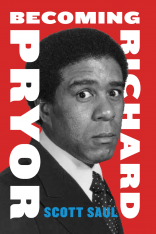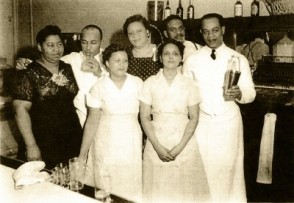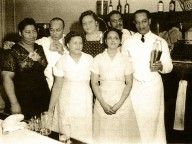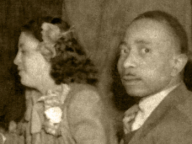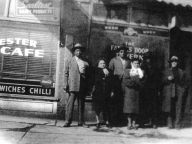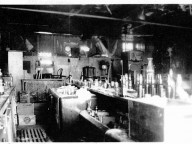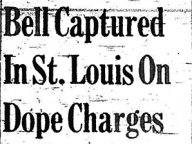The Famous Door
“I couldn't have asked for better material. My eyes and ears absorbed everything. People came in to exchange news, blow steam, or have their say. ”
— Richard Pryor
Operated by the Pryor family in the mid-to-late 1940s, the Famous Door was a lively neighborhood hub in the North Washington district. There, the underage Richard was exposed to a very adult carnival. “As a comedian,” he reflected, “I couldn’t have asked for better material….Everybody had an opinion about something. Even if they didn’t know shit about sports, politics, women, the war. In fact, the less people knew, the louder they got.”
For that young child of four or five, the Famous Door was a scene of baffling drama. A typical episode from Richard’s memories: he recalled seeing a disgruntled marine raising hell, only to be jumped by Richard’s father and uncle. The three adults spent a half hour duking it out — and then, when they’d exhausted themselves, they laughed and shared drinks together.
A Place With Aspirations
But as photographs from the time suggest, the Famous Door also represented the Pryor family’s entrepreneurial ambitions at their fullest. The war years were boom times for Marie and her family. During World War II, up to 25,000 soldiers were stationed at Camp Ellis, the nearby training center, and a good number of them found their way to the block on North Washington Street where Marie ran her brothel. Marie shrewdly capitalized on this influx of customers by expanding her operation to include this tavern, just an alley away on North Adams Street. The whole family chipped in as bartenders, waiters and waitresses, posing together with pride in this family photo.
The place was simple — a handful of tables, drinks but no food, a small bandstand — but it had aspirations. Marie took the tavern’s resonant name, the Famous Door, from a pair of well-known clubs in New Orleans and New York. After expanding to a bigger address, the Famous Door had all the accoutrements of a smart business: elegant colored lettering on its front picture window; a bar gleaming with rows of glasses; bartenders and waitresses dressed all in white; and a bandstand that featured small jazz-blues outfits like local pianist Jimmy Bell‘s celebrated trio.
The Famous Door’s clientele departed sharply from the Peoria norm. Especially after one a.m., when other bars closed, white Peorians would drift to this black-owned establishment and fraternize on equal terms with black Peorians. A family photograph of the club’s interior preserves a spectacle exceptional in late-’40s America. Like other establishments in the red-light district, the Famous Door introduced Richard to the idea that intimacy could cross the color line.
